
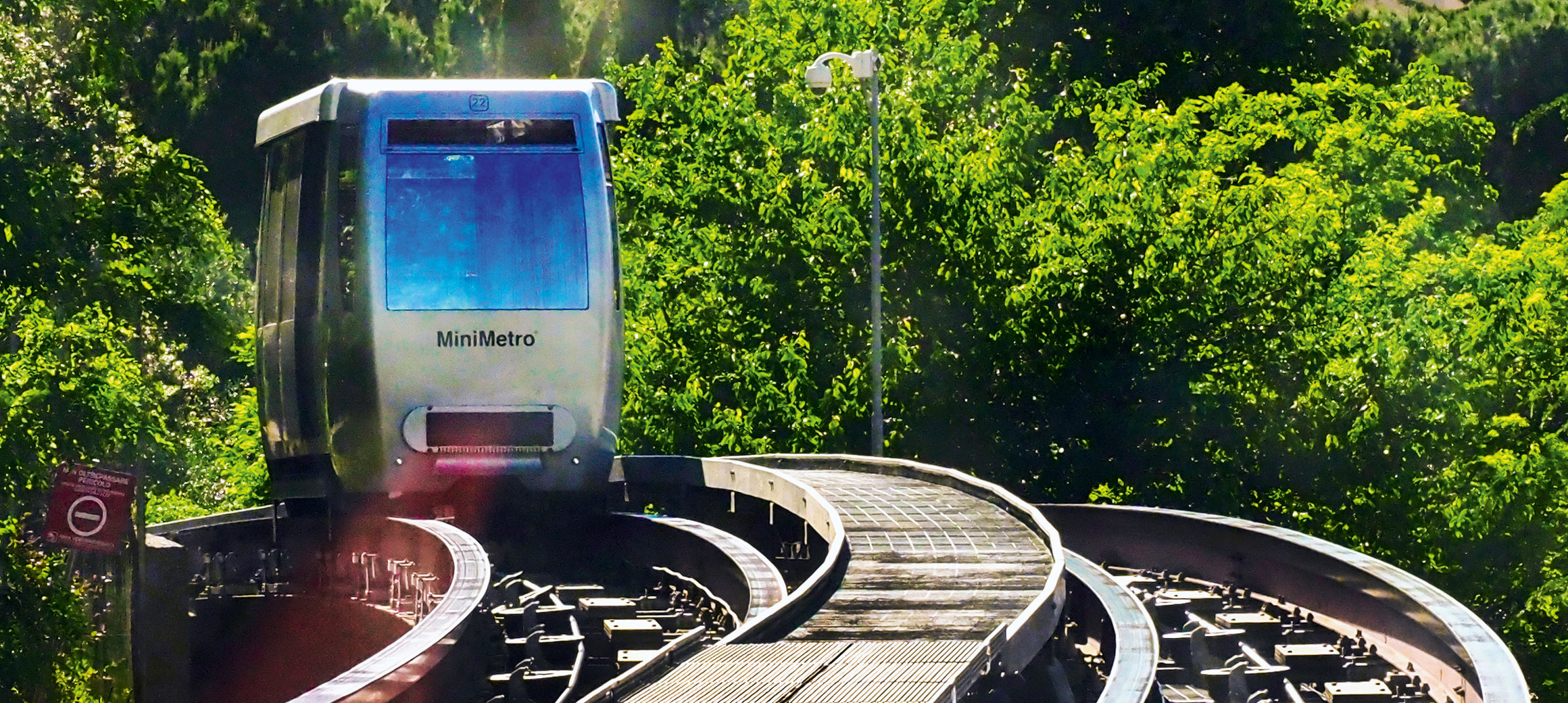
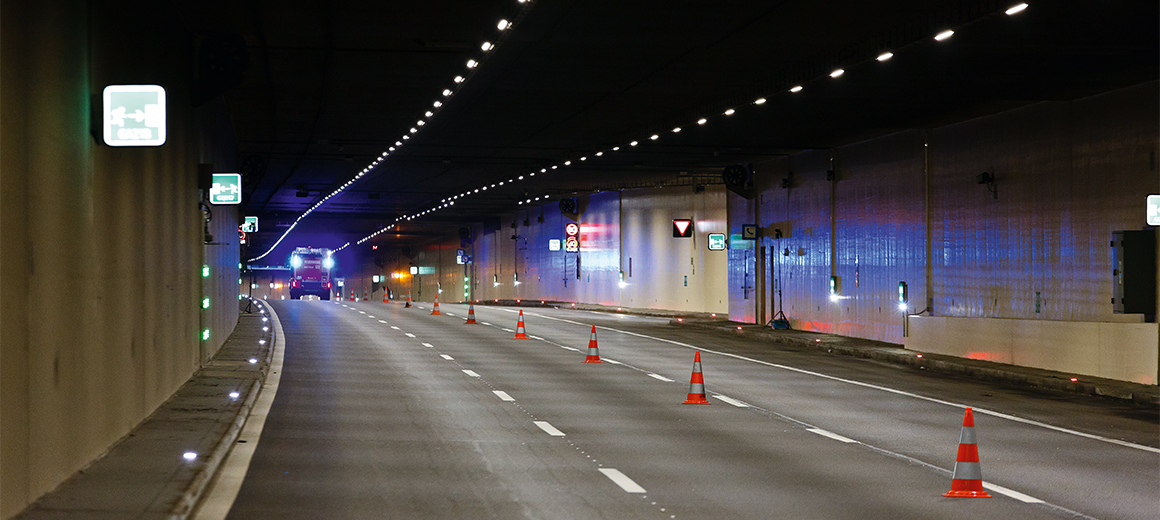
Over 200 IPCs power the modernization of the Kaisermühlen Tunnel in Vienna
PC-based control monitors road tunnel

PC-based building automation helps to create digital twins
Dongfeng Design Institute, China
Sede Brasil
Beckhoff Automação Industrial Ltda.
+55 11 4126-3232
info@beckhoff.com.br
www.beckhoff.com/pt-br/



Over 200 IPCs power the modernization of the Kaisermühlen Tunnel in Vienna

Dongfeng Design Institute, China
More than 50 % of the world’s population currently lives in cities with over a million inhabitants, with forecasts suggesting that this figure is set to rise to 75 % by 2050. But with cities already accounting for three quarters of our global energy consumption, new urban planning concepts are essential for reducing CO2 emissions and ensuring sustainable coexistence in urban areas. This is where the smart city concept comes into play, with its many benefits including an environmentally friendly and stable energy supply, intelligent building automation, new mobility concepts, efficient traffic flows and enhanced public safety.
In this context, technology should not be seen as a driver of urban development, but as a means of making cities sustainable, improving both the quality of life and sense of community of their inhabitants. This requires carefully considered approaches to solutions, ranging from smart mobility concepts that combine public transport with motorized and non-motorized private transport, to the sustainable operation of buildings and even an efficient water and wastewater supply. Digital networking also supports the integration of energy generation and storage systems, which in turn makes a major contribution to grid stability. Another step toward bringing a smart city to life is the digitalization of local administrations, which – based on real data for factors such as air quality, energy and water quality – allows those responsible to maintain an overview and make quick decisions.
Our PC control technology is based on open standards and provides the ideal basis for digitizing buildings, infrastructure projects, water supply and disposal facilities and energy supplies. Continuous data recording and evaluation can generate valuable information to promote the intelligent operation of urban space, which includes factors such as operating buildings efficiently and reliably (by means of concepts such as energy monitoring and predictive maintenance), establishing a reliable energy supply (via smart grid) and optimizing traffic flows.
Your head start with PC-based control:
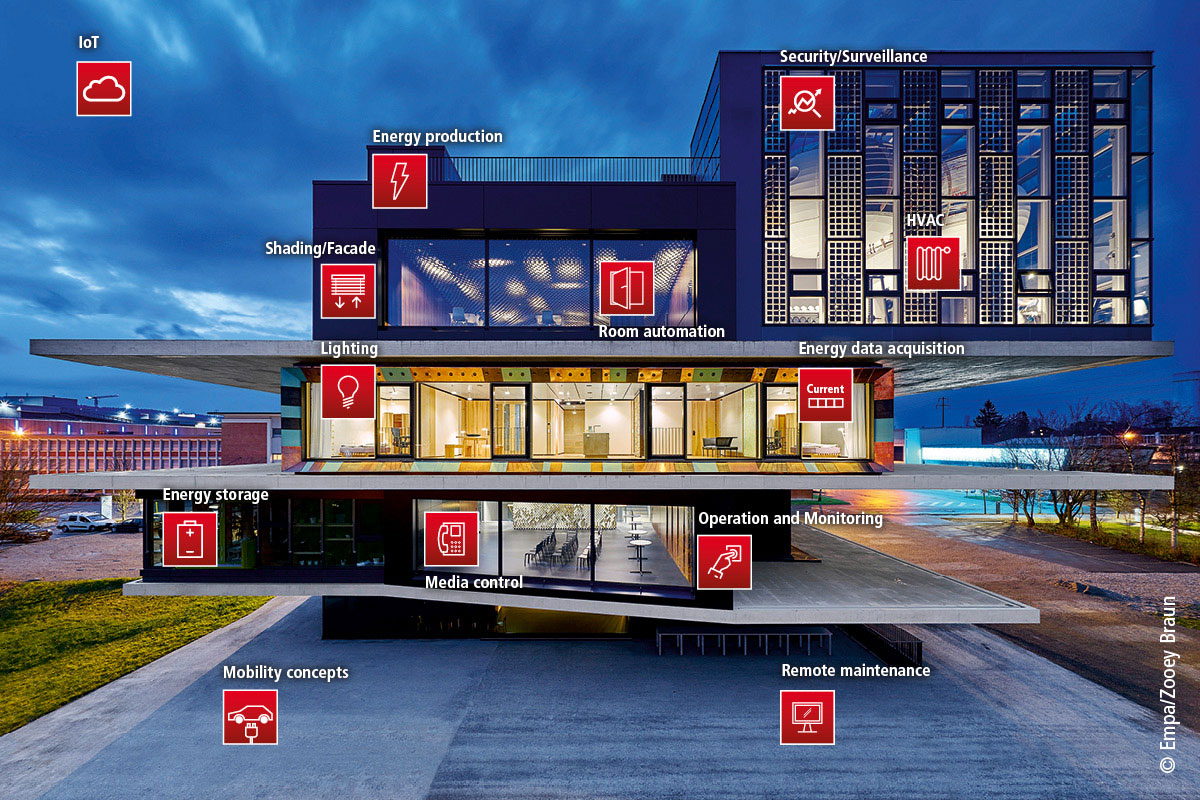
Emissions from the construction and operation of buildings are responsible for 38% of global energy-related CO2 emissions (2020 Global Status Report for Buildings and Construction). In order to achieve the agreed climate targets, these emissions must be greatly reduced. Intelligent building automation and a higher-level digitization strategy are therefore among the key factors in smart city concepts.
As a pioneer in PC-based control technology, we have been a partner to the real estate industry of many years' standing. With our holistic approach to building automation, a sustainable, energy-efficient smart building concept can be implemented. All technical systems – from HVAC to lighting and facade control, and from room automation and AV/media technology to remote maintenance and cloud connectivity – are bundled on an integrated IT-based and PC-based automation platform. The evaluation and analysis of building data for the various functions can take place not only locally in the control but also in the cloud; edge and cloud concepts can be combined as required.
By integrating various building controls into our central, PC-based automation platform, buildings and neighborhoods can be networked with one another and integrated into sustainable smart city concepts. Since all functions run in the same software, future expansions are no problem. The scalability and modularity of our control means the I/O system can be expanded as required and software blocks can be reused when the time comes to add a new building function. This flexible expandability has a particularly beneficial effect in the area of renovation or refurbishment of existing buildings and creates the basis for an economically efficient and future-proof solution. In doing so, the extensive connectivity of our control facilitates communication with existing structures and devices.
PC-based control in use:
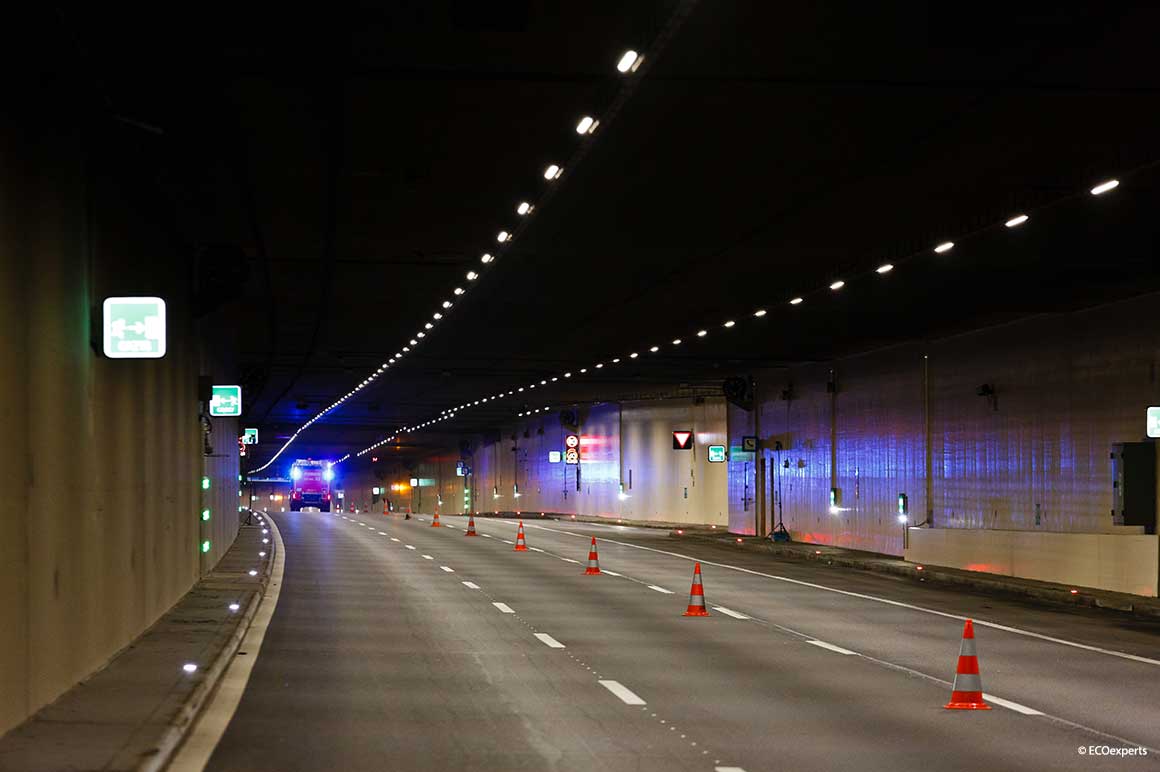
Mobility plays a crucial role in the economic strength of cities and the quality of life they offer. But in view of ongoing urbanization and climate change, the expansion of transport infrastructure has long since reached its limits. With this in mind, what we need are intelligent concepts for implementing needs-based, future-proof mobility solutions that focus not only on reducing CO2 emissions, but also on the quality of life of city dwellers and on road safety.
These solutions include the switch to e-mobility, which encompasses the corresponding infrastructure; expansion and networking of public and non-motorized transport; intelligent controls for avoiding traffic congestion as well as the efficient management of parking spaces. Our control technology is already in use in many of these concepts – e.g., when it comes to collecting real-time data for controlling variable message signs or parking guidance systems. These situations call for fast and precise controls that can communicate with different services. Tunnel automation represents yet another example of intelligent traffic management, from traffic signal control and ventilation and lighting control, through to the integration of surveillance cameras that provide optimal views of congestion in real time. An accurate picture of traffic levels is created by capturing all available data through the automation system.
Our technology is also used in electric car production, as well as in cross-site monitoring and control of the charging process for electric cars, including the billing system. To avoid overloading the power grid, prioritization takes place, as for example when all charging stations in a parking garage are in operation at the same time. PC-based control is also perfectly suited here for networking with mobile devices, as well as for collecting and analyzing large amounts of data in the cloud.
PC-based control in use:
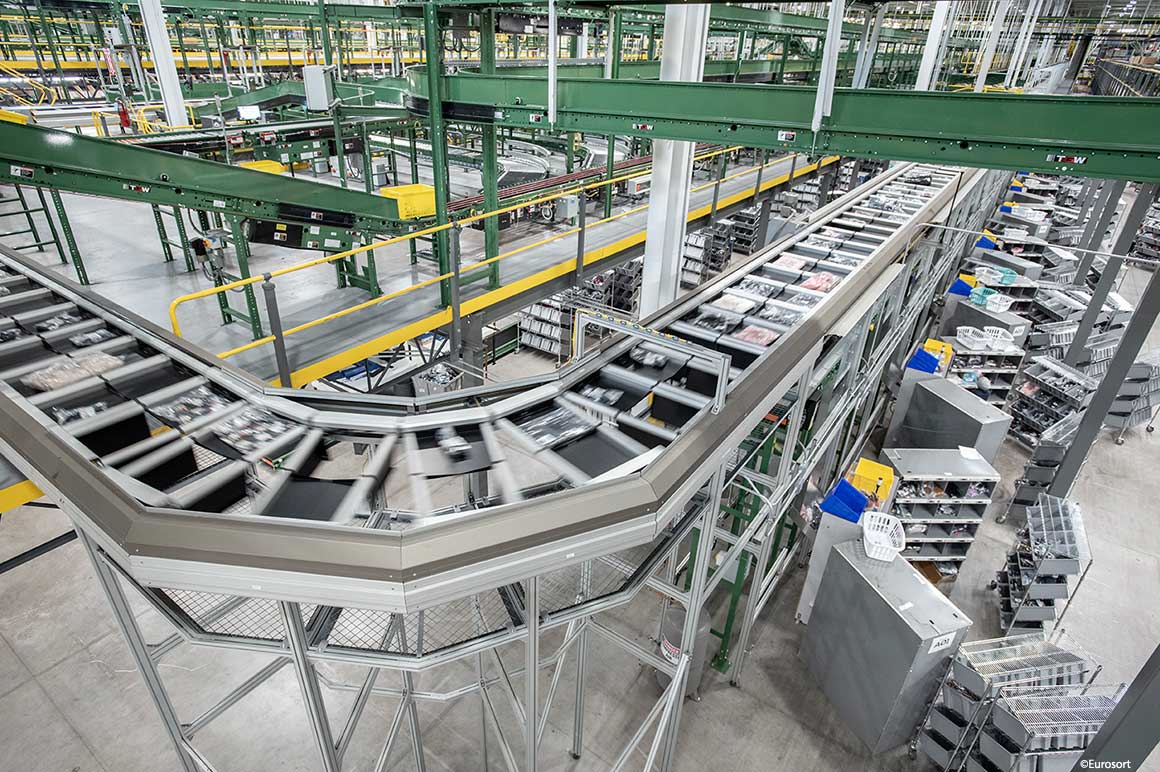
High demands are placed on modern goods logistics: Driven by online retailing, logistics and distribution centers must reliably guarantee the availability of goods with maximum individualization and speed. For this reason, the industry has been relying on digital networking and automation from a very early stage.
The openness of our PC-based control system makes it ideal for optimizing logistics processes by networking production, intralogistics, and retail. We have been active in various areas of logistics for many years – including as a partner to large supermarket chains and their logistics centers. Standardized interfaces in hardware and software facilitate the smooth integration of control technology into new or existing plant structures and form the basis for efficient and reliable order processing.

City logistics is a collective term for various concepts that relieve the burden on urban infrastructure while maintaining a constant quality of supply. The aim is to bundle flows of goods at the recipient location in a freight transport hub close to the city. Optimal organization and capacity utilization reduce the number of delivery trips in the urban area, while electric vehicles or cargo bikes that transport the goods in the city center further reduce emissions and relieve the burden on the urban infrastructure.
The prerequisite is optimum networking of all companies and processes involved in transport, as well as digitization of the required information. Our automation technology ensures that packages find the right way to the vehicle and that cold chains are not interrupted. It also has a role to play when goods take up less transport space by intelligently cutting the packages to an optimum size, thereby saving on emissions and resources.
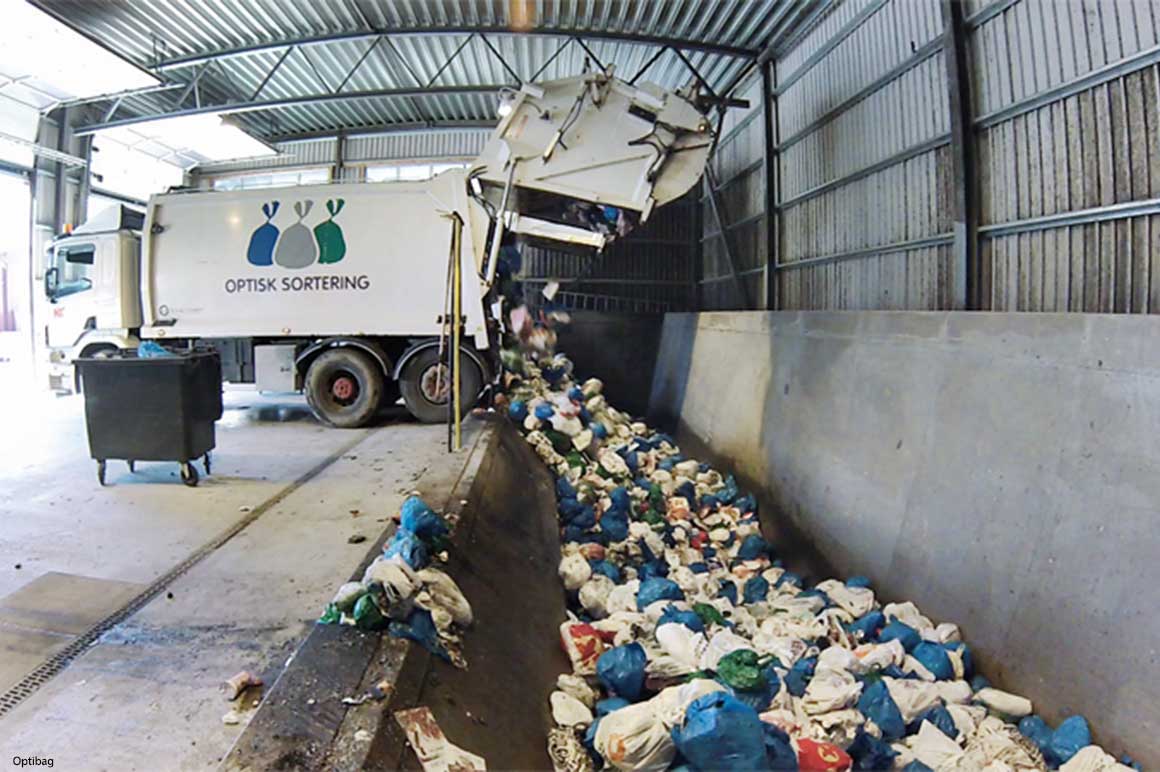
As the volume of waste we produce worldwide steadily increases, so too does the importance of sustainable disposal logistics. It encompasses the entire process chain, from the separation of recyclables and route-optimized collection to the sorting and processing or recycling of waste. In essence, the aims are to optimize all processes through digitization and networking, to conserve resources, and to reduce CO2 emissions.
Sensor monitoring of the fill level of public waste containers makes it possible, for example, to optimize the routes of refuse collection vehicles in real time. The waste containers are only approached when they are almost full. But smart refuse solutions are also increasingly being integrated into building management: from sensor-monitored waste containers to automatic control of cleaning processes based on occupancy status. The data from the individual devices is collected and processed either locally or in the cloud. Underground pipe/vacuum systems for refuse collection, compaction, and disposal, as used in numerous pilot projects, also offer high potential for reducing disposal logistics.
PC-based control in use:
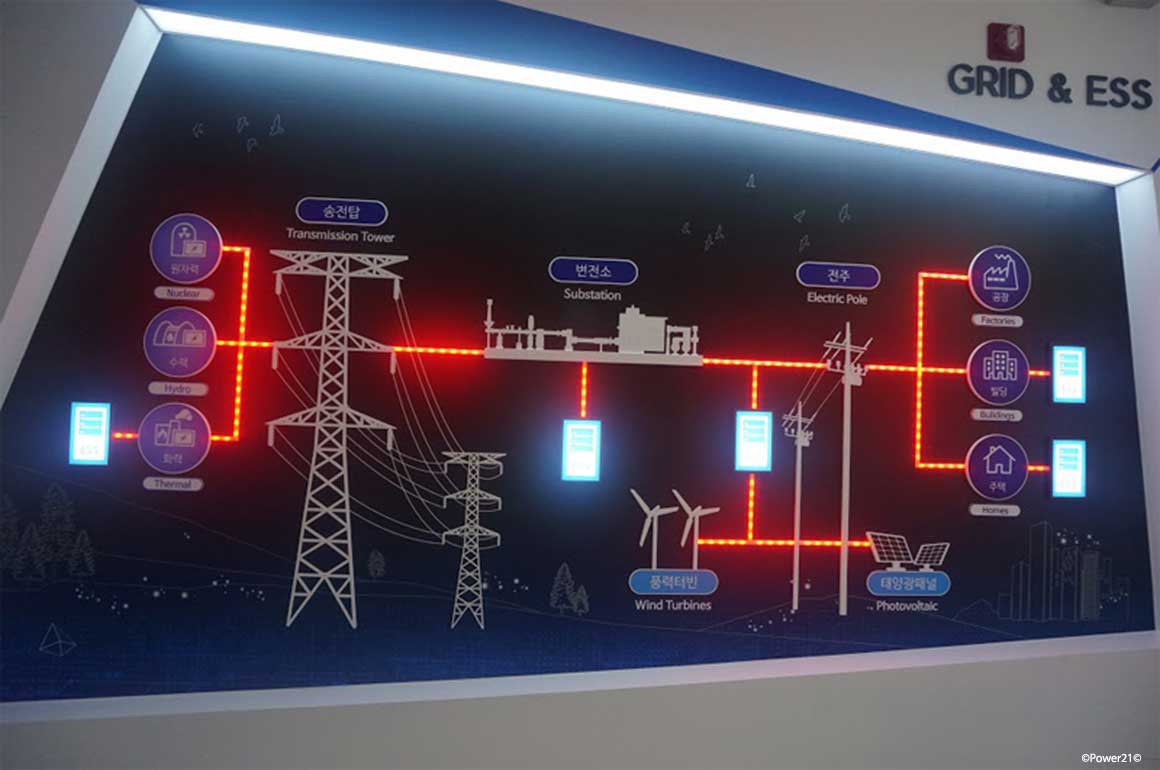
Optimizing energy efficiency through future-proof control solutions is one of the key criteria for sustainable development of urban living environments. Efficient solutions based on intelligent networking are in demand everywhere we look – from the generation of green energy in wind, photovoltaic, or biogas plants or in hydroelectric power stations to intelligent energy storage systems and the control of district heating systems.
Both the decentralized and irregular supply of energy from sustainable sources and bidirectional energy flows require intelligent networking of power generation and storage systems with consumers in smart grids.Feeding in energy information makes it is possible to react quickly to changes in the grid and, what's more, smart grids also offer the possibility of coordinating generation and demand with one another. In addition to the transmission of information to the consumer, this requires consumption information to be captured in a timely manner and transmitted promptly to the energy network via smart metering.
As an automation partner of long-standing to the wind industry and the photovoltaic industry, we have experience in fast wind farm networking, FLISR, decentralized fault location, localization and supply restoration, voltage and reactive power compensation, and power quality monitoring. Our tomation toolkit with the fast EtherCAT fieldbus provides the optimal basis for measuring energy and ensuring network stability.
Sophisticated requirements are also posed by the automation of intelligent storage systems, which have to compensate for frequency fluctuations when sustainable energy sources are fed into the grid and support the grid during production bottlenecks. This requires optimal energy storage management based on the continuous acquisition and monitoring of energy data and on rapid communication via telecontrol protocols. To fulfill this, our control technology supports all common communication standards. A comprehensive range of measurement modules enables the reliable acquisition of temperature, pressure and flow rate. Condition monitoring and power monitoring are also integrated into the automation platform via corresponding interfaces and form the basis for predictive maintenance and the evaluation of raw current and voltage data.
PC-based control in use:

Today, planners and engineers in the field of water management are faced with more than just the challenge of ensuring the supply of clean drinking water and of reliable wastewater disposal. In view of increasing global population and demographic changes, the focus is increasingly on issues such as sustainability and efficiency in the use of water as a resource. This is where existing infrastructures often reach their limits, which means that partially outdated systems need to be retrofitted and new approaches tested. With regard to water management, an unusual complexity exists when it comes to adapting to different communication channels, controls, and devices, as a very wide variety of devices for solving special problems has come into use over the years. That's not forgetting, of course, the adaptations to various software packages, such as local visualization, on-site data loggers, and central control and operation management systems.
This is where our PC-based control technology offers the ideal solution: It is suitable as an integrated control platform for both the central control of a wastewater treatment plant and the decentralized control of various external stations, such as wells, pumping stations, rain overflow basins, water towers, grit chambers, pre-treatment, mechanical and biological treatment, sludge treatment and secondary treatment. The variety of interfaces allows our PC-based control to support all common communication media and standards into the higher process level, e.g., via OPC UA, as well as to the field level. Communication over long distances takes place via cloud, analog modem, radio, PC networks, or mobile networks. The openness of PC-based automation also facilitates adaptation to existing systems, meaning a plant retrofit to improve energy efficiency can be implemented without any problems.
PC-based control in use:

The tourism sector is the third largest socio-economic sector in the EU and plays a crucial role in growth and employment. The industry is facing up to criticism as an environmental offender and is massively promoting the topics of sustainability and digitization. Since 2019, the EU Commission has awarded two cities a year the title of 'EU Capital of Smart Tourism'. The award is presented to European cities that excel in the areas of sustainable, digital, innovative, and inclusive solutions in tourism.
When it comes to sustainability, aspects that are evaluated include recycling and refuse reclamation, the environmental certification of hotels and restaurants, greenhouse gas emissions, the accessibility of public transportation, and the availability of facilities such as rental bicycles and electric scooters. Another important criterion to consider is access to tourist services and products through new technologies, such as an app that guides visitors to attractions around the city and provides information about hotels and restaurants.
Interaction via smartphone has also had an impact on festivals, in amusement parks, or on cruise ships for informing guests about on-site attractions. Awareness of sustainability, energy efficiency, and environmental compatibility is also increasingly taking hold in these market segments, which are characterized by a high level of energy consumption.
PC-based control in use:

PC-based control from Beckhoff integrates all building automation functions on one control platform.
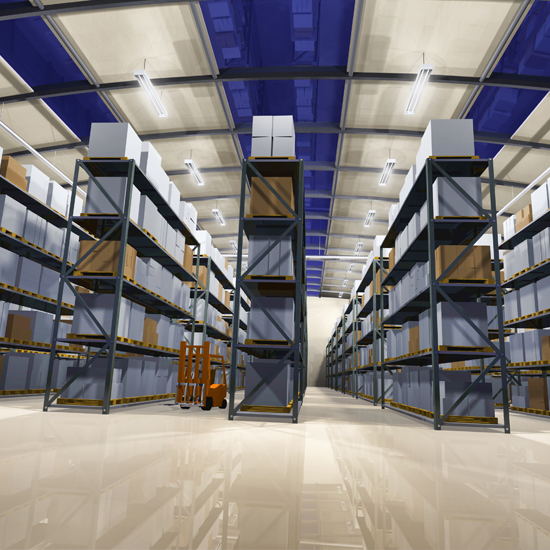
Scalable with high performance: PC-based control for control and drive technology tasks in warehouse and distribution logistics.
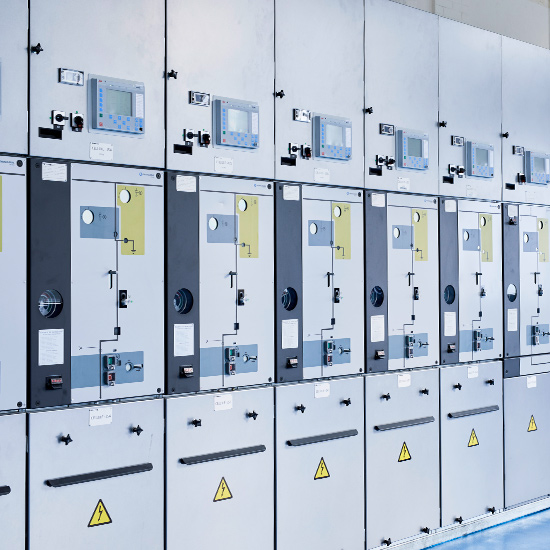
IIoT-enabled solutions offer transparency for machines and energy distribution.
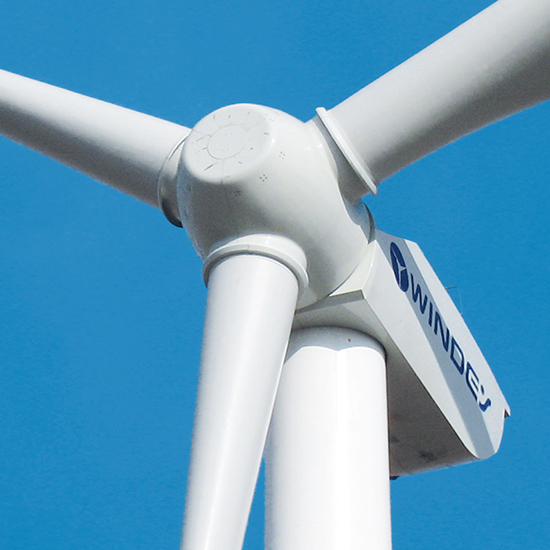
More than 125,000 wind turbines worldwide up to a size of 16 MW have already been automated with Beckhoff technology.
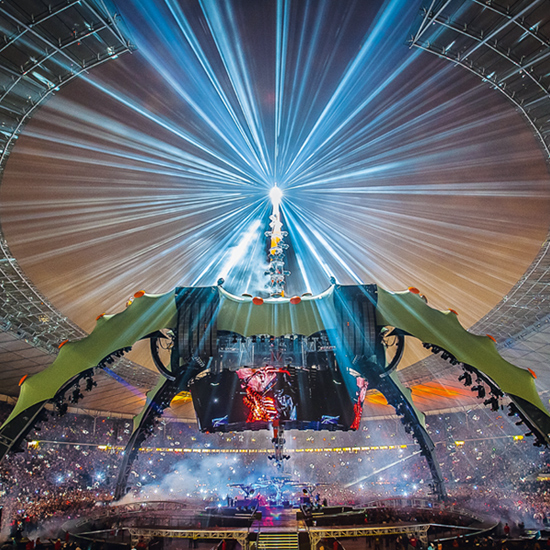
Ultimate guest experience: PC-based control for the entertainment industry